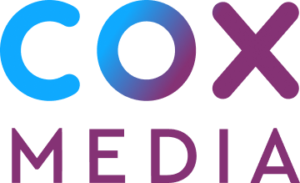The Industry’s Take on Programmatic
It might not come as a surprise that more and more marketers are embracing programmatic marketing. Programmatic advertising has been growing for years now, and there’s no sign of a slowdown. Indeed, recent forecasts from eMarketer, Forrester, and BI Intelligence all point to significant growth for the industry in the years ahead.
What’s far more surprising is just how rapidly programmatic is growing. The Programmatic Advertising Pulse, a new Chango survey of marketers at Fortune 500 companies, reveals that programmatic has made huge progress in the last year alone and has perhaps already made the leap from being the “next big thing” to being a major force in digital marketing.
How mainstream has programmatic become? Approximately 70 percent of respondents to the survey revealed that their brands now use programmatic in one form or another. But, remarkable though that number is, given that programmatic is still a relatively new technology, perhaps even more remarkable was that 30 percent of the respondents said that their companies had only gone programmatic within the last year.
It all begs the question: Why is it happening? What changed in the last year or two to make programmatic a must-have technology for so many marketers at Fortune 500 companies? The Programmatic Advertising Pulse tackled this question as well, and there was little ambiguity in the responses. Asked to “rank the performance of each of the key factors driving your use of programmatic advertising today,” the answer “better at targeting consumers across digital devices/platforms” came out atop the list.
Only a few years ago, better targeting across devices might well have come at the bottom of the list of reasons for adopting programmatic technology — and not only because the multi-device phenomenon was still in its early stages. Until recently, programmatic was thought to have an inherent limitation when it came to cross-device targeting, namely, the inability to transfer cookies from one device to another.
The very good news for the industry is that creative minds have come together to solve the so-called “cookie problem.” Indeed, it won’t happen overnight, but we may be very gradually moving toward a post-cookie world, and the Programmatic Advertising Pulse suggests that programmatic marketing will continue to thrive in that world.
Considering how well targeted ads have performed on mobile, particularly via Facebook, it makes sense that so many marketers want to use programmatic on multiple devices. It also makes sense that the marketers listed “improved performance” and “cost efficiencies” as reasons for bringing programmatic techniques into their campaigns.
Does this mean that the programmatic industry has overcome all of its challenges? Of course not. Programmatic is still in its infancy, and there is still plenty of room for improvement, particularly when it comes to settling on the right metrics for measuring programmatic campaigns. (The industry has been far too slow in transitioning from last-click attribution, which will never make sense for programmatic, to more reliable metrics, such as view-through attribution.)
But, at the end of the day, marketers, like everyone else, will go with the solution that works best and saves money. Programmatic is making massive gains because it’s helping marketers deliver the right message to the right people at the right time — even as consumers shift from one device to another. Maybe we already suspected this, but it’s nice to see our hunches reinforced by the hard data in the Programmatic Advertising Pulse.
Source: Chango
Connect with a Marketing Expert
Share Post On Social
Related Insights
Connect With Your Local Marketing Expert
You know your business. We know advertising. Together, we can bring your business to more people. Contact a member of our team today. We’d love to help you grow.

